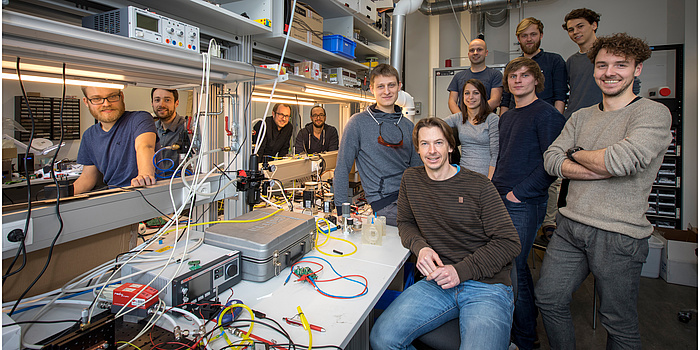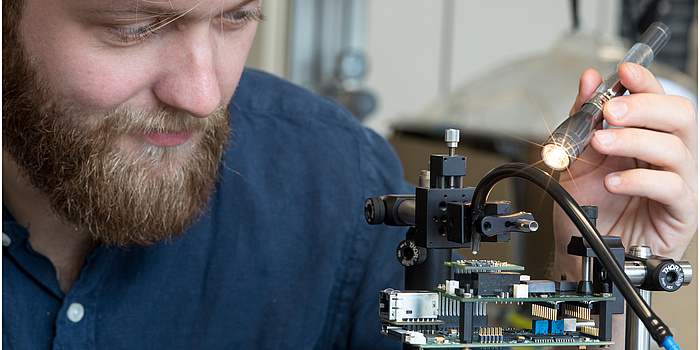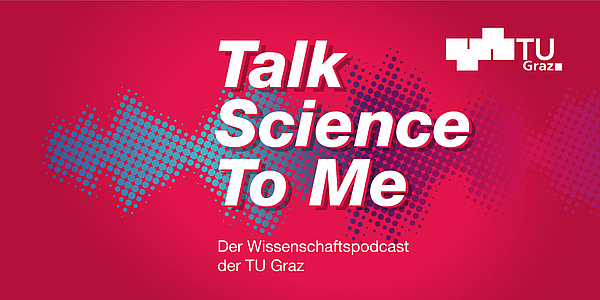Environmental sensor systems: a deep breath for science
![[Translate to Englisch:] Eine grüne Platte mit mehreren goldenen Plättchen. In der Mitte ein Sensor.](https://www.tugraz.at/fileadmin/_processed_/3/3/csm_N_S_Planetresearch_2018_Sensorik_Banner2_by_Lunghammer-TUGraz_685877d3af.jpg)

The vision of a greener world
Today, research at the Institute is working towards implementing one vision in particular: making a publicly accessible air-quality index. This index should be able to describe air quality exactly at particular places. For instance, it could allow the healthiest cycle routes to be filtered out, and reveal the degree of air pollution at home or at work, thus also allowing for improvement measures. “This would have massive effects,” says Bergmann. “For instance on property prices and other things.” But aren’t there already air-quality maps? “Yes, there are. But the data pool is taken from fewer public measuring stations with less corresponding spatial resolution and then projected using appropriate models. Up to now a comprehensive measurement hasn’t been possible because we haven’t had sufficient cheap and accurate sensors,” explains Bergmann.I was always interested in quantifying things which our human senses couldn’t apprehend.
At the Institute researchers are working on particularly small sensors which could be integrated, for instance, in small devices such as networked air conditioners in houses, mobile phones and wearables. “With these we could create a close-knit network of sensor nodes which could make really accurate statements,” he explained. Of course, with all the talk of ever smaller sizes, these sensors would have to be completely reliable and ensure a high data quality, because “The best analyses are only as good as the data which the sensors supply.”Problematic process
For use in houses, mobile phones and wearables, the sensors have to be designed in small sizes and at low cost without measuring more inaccurately than their shoe-box sized and expensive relatives. This poses challenges to the developers, Bergmann adds: “On the one hand, we have to make sure that even in the case of the smallest possible architectures, sufficient air will be sucked in so that representative statements can be made about it. On the other hand, the particular matter has to be removed completely so that it doesn’t contaminate the surface of the sensor and make it unusable.” The sensors are just like the people they help: breathing in and out in polluted air is not easy – for neither man nor machine.
Nature as model
In the future, Alexander Bergmann would additionally like to use nature as a model for his research. For instance, to investigate what sensors plants use to perceive their environment. “Unfortunately we humans, for example, don’t have any inbuilt sensors to measure particular matter.” One area of application in a subsequent step could be health. At the Institute, we have been thinking a great deal about sensors, for example, ones which can make use of a wide variety of methods to be able to measure glucose or lactate values without relying on annoying needle pricks. “The technologisation of biology will have a huge impact in the future,” predicts Bergmann.The perfect time
The time seems to be perfect to be grappling with sensor technology. More and more data is being collected, transmitted to the digital world and analysed using Big Data approaches. And in the automation of production in high-tech factories, for example, better and better sensors are needed to be able to work efficiently and reliably. If you think about all the current hype about autonomous driving, the necessity of comprehensive sensor systems is obvious. Other applications range from baking ovens to snow cannons, or, as Alexander Bergmann puts it: “You can always do with a good sensor.”This research project is attributed to the Fields of Expertise <link https: www.tugraz.at en research fields-of-expertise information-communication-computing overview-information-communication-computing _blank int-link-external external link in new>„Information, Communication & Computing“ and <link https: www.tugraz.at en research fields-of-expertise advanced-materials-science overview-advanced-materials-science _blank int-link-external external link in new>„Advanced Materials Science“, two of TU Graz' five strategic areas of research.
Visit <link https: www.tugraz.at en tu-graz services news-stories planet-research all-articles _blank int-link-external external link in new>Planet research for more research related news.
Kontakt
Univ.-Prof. Mag.rer.nat. Dr.rer.nat
Institute of Electronic Sensor Systems
Inffeldgasse 10/II | 8010 Graz
Phone: +43 316 873 3340
<link int-link-mail window for sending>alexander.bergmann@tugraz.at

![[Translate to Englisch:]](https://www.tugraz.at/fileadmin/_processed_/9/8/csm_banner-thek-by-privat_a42f57f7b3.jpg)


